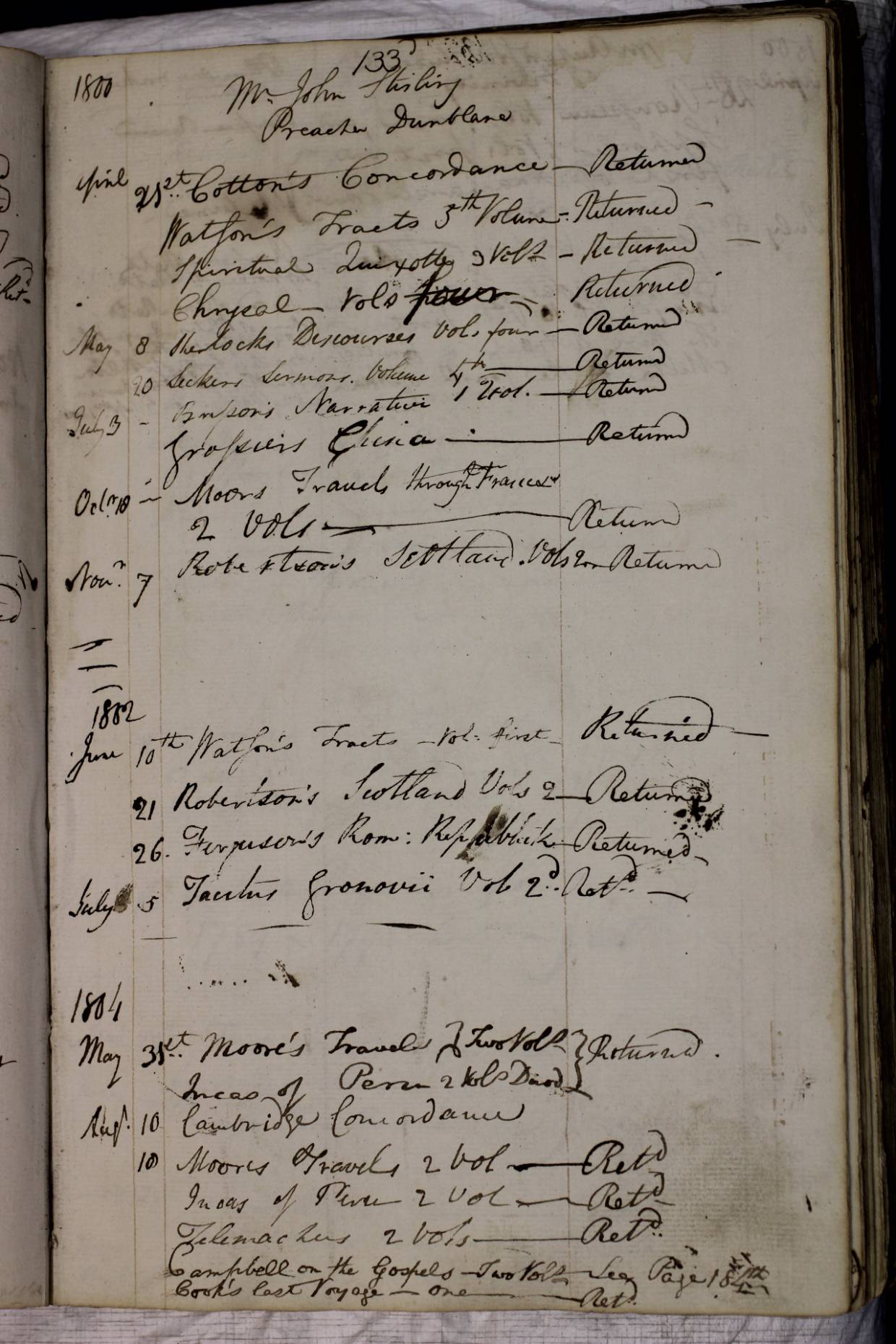Stirling researchers to uncover Scotland’s hidden reading history
Experts at the University of Stirling have been awarded £1m for a unique project aiming to uncover the history of reading in Scotland from 1750 to 1830.
/filters:format(webp)/filters:no_upscale()/prod01/cdn/media/stirling/news/news-centre/2020/october/Books-and-Borrowing_BANNBER-1920X689.jpg)
Experts at the University of Stirling have been awarded £1m for a unique project aiming to uncover the history of reading in Scotland from 1750 to 1830.
The research, which represents the first attempt to systematically analyse and compare borrowers’ registers across Scotland, is being led by English Studies lecturer Dr Katie Halsey, to establish important details about which books readers actually engaged with in this period. The project’s co-Investigator is Dr Matthew Sangster of the University of Glasgow.
Dr Halsey, who is based at Stirling’s Faculty of Arts and Humanities, said: “We are bringing together the largest number of historic borrowing records ever attempted, and our eventual database will contain at least 150,000 records of borrowing.
“By analysing existing records from 15 historic libraries across Scotland, this cutting-edge research will contradict established narratives about which books are important to our national history and explore what was actually being read.
“From lead miners in Dumfries and Galloway to clergymen in Dunblane and advocates in Edinburgh, we’ll explore the hidden histories of the book use of people across the country during this time period and create a valuable new resource to reveal participation in literate culture.”
The study, Books and Borrowing 1750-1830: An Analysis of Scottish Borrowers' Registers, has received £1,014,683 from the Arts & Humanities Research Council with final results expected in May 2023.
Represented in the records of the 15 partner libraries are farmers and farm workers, gamekeepers, shepherds, blacksmiths, lay preachers, vagabonds, poachers, sailors, maidservants and schoolchildren, as well as members of the professional and leisured classes.

Library borrowers' record from Leighton Library, Dunblane. Photograph © Katie Halsey. By kind permission of the Trustees of the Leighton Library.
Dr Halsey added: “Understanding more about which works, authors and ideas shaped our national culture will help us to better understand - and in some cases challenge - long-standing ideas about Scottish identity. We hope also that our research will lead to greater knowledge of the importance of libraries to cultural life.”
The research team will photograph, transcribe and normalise the data drawn from these borrowers’ registers, with their results set to be published in a monograph by Drs Halsey and Sangster and a special issue of the journal Library and Information History.
A series of public events, including creative writing workshops, exhibitions and a ‘detective’ workshop, showing members of the public how to track down obscure people from the past using entries in the borrowers’ records, are planned throughout the project.
The 15 partner libraries include: The university libraries of Aberdeen, Edinburgh, Glasgow and St Andrew’s, the National Library of Scotland, the Advocates Library, the Library of Innerpeffray, Kirkwall Library and Westerkirk Miners’ Library.
A full list and more details about the project can be found on the dedicated website.
